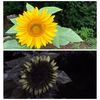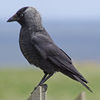Should I use a neutral density filter when taking a moon photo
Feb 28, 2016 13:58:37 #
OlinBost wrote:
I have tried to take photos of the moon but the reflection I encounter does not give me a sharp picture. Should I use a neutral density filter and which one?
Thanks, still so much to learn.
Thanks, still so much to learn.
I've shot a lot of Moon pix and have never used a neutral density filter. Just be sure to meter on the Moon itself.
The Moon is a very bright object in, normally, a very dark background. Internal lens reflections can occur. Try shooting the Moon during the daytime or just after sunrise or sunset to reduce this problem.
bwa
Feb 28, 2016 14:24:19 #
Earworms wrote:
I must now confess that I believe I didn't quite state the preceding accurately. That is, I believe my "trivia point" actually relates to the intensity of sunlight being 2 to the 19th power greater than that of moonlight, i.e. 19 f-stops greater.Interesting. I often read about Hoggers shooting the moon, but I have yet to read about anyone shooting the Sun ...
Feb 28, 2016 14:45:42 #
pecohen wrote:
Assuming that the camera is held rock-solid, the major apparent movement of the moon is due to the earth's rotation. As bright as the unobstructed moon is, there is little reason to take such a long exposure but suppose put an IR filter on (assuming we did not remove the factory installed filter that blocks IR) and did take a 30 second exposure. In that 20 seconds the earth would have rotated 0.125 degrees. Under very close inspection you might just be able to see that motion.
Absolutely right, except that the motion blur on the moon after a 20 second exposure would be very obvious. But unless we're doing something unusual such as using an IR filter, there's no need to use a slower speed than 1/1000s, so the moon's motion is irrelevant. It's angular movement is slower than a snail at the bottom of the garden!
Feb 28, 2016 16:12:32 #
billnikon
Loc: Pennsylvania/Ohio/Florida/Maui/Oregon/Vermont
amfoto1 wrote:
Incorrect...
That's "sunny 16" and will under-expose the moon.
The moon will typically require 2 stops more exposure... so use f8 (instead of f16).
That's "sunny 16" and will under-expose the moon.
The moon will typically require 2 stops more exposure... so use f8 (instead of f16).
Hold on guy. I said begin with, not end with. And, I was not incorrect as a starting point.
Feb 28, 2016 16:59:59 #
Gene51 wrote:
Generally speaking, the exposure you would use on a sunny day on earth would be the same you would use for shooting the moon, more or less.
F8, 1/250 ISO 100 is a good place to start. Your sharpest images will be when the moon is in partial phase, so that the light angle on the surface is lower providing nice contrast on the features.
F8, 1/250 ISO 100 is a good place to start. Your sharpest images will be when the moon is in partial phase, so that the light angle on the surface is lower providing nice contrast on the features.
:thumbup: :thumbup: :thumbup: Terrific example and good words of wisdom. Keeping your exposure mode in manual and experimenting with exposures will keep from having the cameras exposure meter, seeing all the black of space and saying: "Oh me, look at all that black, I must open up to give it more exposure." That's how exposure meters work and why you should using one on taking images of the moon.
Feb 28, 2016 20:50:23 #
the f/stops here wrote:
:thumbup: :thumbup: :thumbup: Terrific example and good words of wisdom. Keeping your exposure mode in manual and experimenting with exposures will keep from having the cameras exposure meter, seeing all the black of space and saying: "Oh me, look at all that black, I must open up to give it more exposure." That's how exposure meters work and why you should using one on taking images of the moon.
Thanks!
Been doing this a while - learned a few techniques along the way - (since 1967). :)
Feb 29, 2016 14:35:07 #
A blue filter was recommended to me many years ago. Reduces contrast to improve details observable and capturable on film. Don't know about digital images. I just process those in PS
Feb 29, 2016 18:25:07 #
jhkpilot wrote:
A blue filter was recommended to me many years ago. Reduces contrast to improve details observable and capturable on film. Don't know about digital images. I just process those in PS
An interesting thought. I have some RAW moon shots that I may drag out and re-process with this in mind. It would be easy to replicate the action of a blue filter in post-processing. Topaz Lens Effects even has this as an option I believe and I think also in Topaz B&W Effects - but any editor worth its salt should be able to reduce yellow and that probably does much the same thing.
If you want to reply, then register here. Registration is free and your account is created instantly, so you can post right away.




